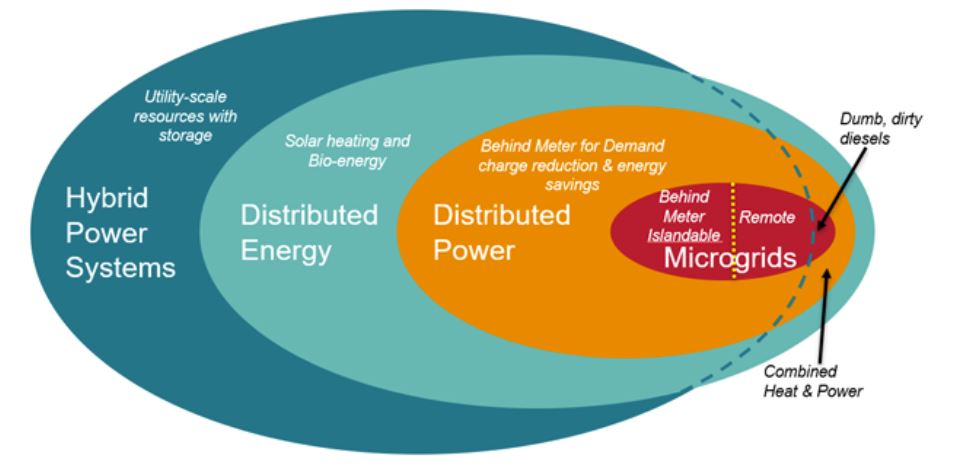2020 has been a year that will live on in history. With the backdrop of a global pandemic, political and social unrest, massive fires and storms, and more, HOMER Energy LLC underwent its own transformation from a small, mostly family-owned company to a wholly-owned part of UL, an international leader in safety and sustainability.
This acquisition and merger opened up new opportunities for HOMER and our customers as well, with expanded software development resources and knowledge, much greater advisory service opportunities, and the stability that comes with being part of a much larger organization.

While 2020 tested us, challenged us, and made us examine almost every aspect of our lives and our business, it also helped us focus and prepare for the transition that is coming in 2021 and beyond. I suspect that we will look back from the future and recognize 2020 as the year that pushed much of the world to recognize that “business as usual” was no longer working. We are in the midst of a massive change in how the world produces and uses energy, among other societal changes
As this remarkable year draws to a close, please join me to review some of the changes that HOMER experienced in 2020 and look ahead to our plans for 2021 and beyond.
Most importantly, please take a moment to participate in our first-ever comprehensive survey about your needs and wants with regard to planning and analysis for hybrid power systems.
HOMER – The Software That Started It All
HOMER software was created at the US Dept of Energy’s National Renewable Energy Laboratory in 1992, as a way to examine options for village electrification. The term “microgrid” was virtually unknown at that time. But the need for HOMER arose from the inherent complexity in evaluating options for adding renewable generation (solar and small wind) and battery storage to village power systems that were run by diesel.
HOMER is an acronym for “Hybrid Optimization of Multiple Energy Resources.” The first two letters capture the essence of both the problem and the solution: “hybrid” and “optimization.” Allowing multiple resources and generation options creates a multitude of decisions and trade-offs in order to meet the load over time in a way that will lead to the lowest cost of energy. The addition of renewables and storage also introduces complex economic decisions. At the most basic level there is a tradeoff between mostly operating and maintenance costs for diesel, or mostly capital costs for solar, storage, or wind and a myriad of additional decisions and trade-offs during the design process.
Making Solid Decisions About Power Systems
HOMER has always been more about making decisions about what–or even if–to build than about detailed design. The initial goal was to answer a basic question: “What is the least expensive power system that will meet the needs of a particular situation?”
As HOMER was discovered and used by the then small global community dedicated to electrification, more questions were posed to HOMER. There is now a vastly expanded set of options to meet an electric load, including all of the hybrid combinations. Over the years, enhancements were made to help answer these questions:
1. If there is a grid available nearby, is it more cost-effective to extend the grid or build a remote microgrid?
2. If there is a grid available locally, but it’s unreliable or only available at certain times, what is the least cost system needed to have reliable power?
3. What if my forecasts about costs or renewable resources are wrong? How much will that matter, and how can I mitigate it?
4. What if I need heat as well as power? Would a combined heat and power system make sense? Or using excess renewable energy when the batteries are full?
5. What kind of system do I need to run for a few weeks in an emergency, if there is no grid available?
6. What if I am running a commercial or industrial facility attached to a grid, and I want to add solar, storage, or other local generation in order to reduce my demand charges or optimize my time of use rates – how do I best do that?
None of these are “back-of-the-envelope” questions, nor can they be addressed with a spreadsheet. Each requires consideration of thousands of possibilities, sometimes simultaneously. HOMER Pro has always been used for these questions, but HOMER Grid, introduced in 2018, focused particularly on the last 2 questions.
2020 – UL Offers New Possibilities
The December 2019 acquisition by UL created new synergies for HOMER. UL has offices in over 100 countries and a global network of engineers and business development specialists focused on renewable energy. We are now able to respond more quickly and intelligently to changes in the market and to the needs of our customers. As a result, in 2020 we introduced two new major enhancements to HOMER:
1. Professional quality reports, which can be edited and customized to meet your business needs, in both HOMER Pro and HOMER Grid.
2. The ability to model electrical vehicle charging stations in HOMER Grid.
In addition to the software enhancements, we added significantly to our capabilities in advisory and professional services. We now have support staff in India as well as Colorado, allowing us to more quickly respond to customer needs in the Eastern Hemisphere, and we have been able to efficiently address more complex advisory issues.
We have continuing plans for improving our products to meet the expanding role of electric vehicles and the complexity of tariffs, as well as model technologies such as green hydrogen and other innovative storage systems.
The Future is Hybrid
If there is one lesson from 2020, it’s that the future is not only renewable, it is hybrid. The growth in microgrids was driven by the dropping cost of solar, while the cost of diesel fuel was rising. There is a somewhat analogous trend taking place now, with innovation in storage driving down costs in many sectors, but increasing demand-based tariffs make grid-only solutions more expensive.
For much of 2020, we have been “heads down” learning how to most effectively model the addition of storage to utility-scale systems. We are now able to model these systems using a HOMER approach, through our professional services team, and we are preparing to release a licensable product in 2021 that is focused on these “front-of-the-meter” (FTM) hybrid systems.
Wood Mackenzie reports “staggering” growth in FTM storage in the 3rd quarter of 2020 – 476 MW, mostly in California, more than the total installations across all segments in the past 7 years, according to the US Energy Storage Monitor Report Q4 2020. We are hearing from our colleagues around the globe that front-of-the-meter storage installations are going to continue to trend, and it is our intention to grow and enhance HOMER and our services along with this market.
Moving Beyond Microgrids
From its humble beginnings serving the electrification and energy access world, HOMER has expanded from hybrid microgrids into the full range of hybrid power. Microgrids—whether they are grid-connected “islandable” systems within a larger grid, or fully remote—are almost all hybrid. A fully diesel system (“dumb, dirty diesels” in the figure below) is technically a microgrid, but not hybrid. Combined heat and power systems on campuses and in large buildings are distributed power, but not necessarily hybrid.

The “now” and future of power is hybrid, and the energy landscape of today already encompasses a range of possibilities. Gone are the days of a single solution – the electrical grid – solving all our problems. Vehicle to grid, blockchain and peer-to-peer transactions, demand response contracts, green hydrogen, and more are coming — and coming quickly.
Our intention at UL is to serve this industry with best-in-class software and services.
Help Pave the Path Forward
Here at the end of 2020, I invite you to participate in the HOMER 2020 User Survey. Help us understand what you most need out of HOMER, and how we can best serve you in 2021 and beyond. Take the survey here (through January 31, 2021).
